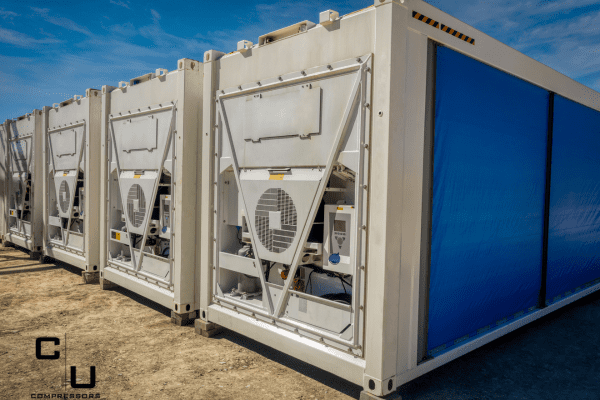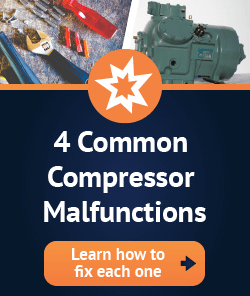The American Innovation and Manufacturing Act (AIM) included provisions related to phase-down and phase-out of previous generation refrigerants. The goal of the phase-out is to ensure new equipment in the HVAC/R space uses environmentally friendly refrigerant with low Global Warming Potential (GWP).
During the phase-down period beginning 2022, the EPA reduced the supply of HFC refrigerants by about 40%. The first “hard limits” related to the phase-down may very well be seen in 2025, a watershed moment when GWP restrictions for light commercial and residential air conditioning will actually be enforced.
Even at this intermediate stage, organizations might soon face a critical shortage of standard HFC refrigerants. It may be wise to pivot to a replacement refrigerant sooner rather than later! As global HFC stockpiles fade, prices of available HFC will go up and savings related to its continued use will evaporate.
And what will happen when the phase-down is complete?
Although older HFC refrigerants may still be used in compatible equipment for the time being, deprecated refrigerants will no longer be manufactured, marketed, sold, or distributed. That means organizations can attempt to utilize their existing stockpile of older refrigerants but will ultimately need to make the switch.
ASHRAE-classified A2L refrigerants are the newest class of low-GWP refrigerants expected to supersede the existing roster of HFC refrigerants. A2L refrigerants have been used safely for a number of years worldwide. However, they are relatively new to the U.S. market and come with some concerns.
A2L refrigerants are commonplace in much of the world. They are most usually found in automotive HVAC systems, but they can also be used for a full range of commercial and industrial applications. Although they benefit from their low GWP, one prevalent issue relates to their relatively high flammability.
How High Is the Risk of Fire with A2L Refrigerants?
A2Ls like R-32 and R-454B refrigerant are flammable in comparison with standard HFC refrigerants, but they are not likely to start a fire on their own. Given that it may be many years before local building codes and other key regulations catch up with the issue, however, it is critical to be aware of it.
Research by Danfoss indicates that the fire risk presented by A2L refrigerants is manageable. A1 refrigerants like CFCs and HFCs are designated “no flame propagation,” meaning it’s effectively impossible to ignite them under anything approaching ordinary usage conditions. A2L, on the other hand, is designated “lower flammability.”
When compared to other refrigerants available on the market, such as the industrial refrigerants under the A3 classification, A2L refrigerants look a lot more friendly. A2L refrigerants need about 1,000 times more energy to ignite when compared to A3 refrigerants. But what does that mean in practice?
While it’s incredibly important to avoid even the slightest flicker of a stray spark around A3 chemicals, an A2L refrigerant is unlikely to ignite thanks to a discarded cigarette, one of the most common sources of accidental fire. It is even possible to use space heaters responsibly around them.
It’s crucial to act in a responsible and professional manner around commercial refrigerants and other chemicals. That said, it is extremely unlikely that personnel in most workplaces will see a noticeable difference in overall safety risks as a result of adopting A2L refrigerants. Storage of unused A2L will be virtually identical to HFCs and CFCs.
How Toxic Are A2L Refrigerants?
Are A2L refrigerants substantially more toxic than today’s most common refrigerants? Looking beyond the issue of Global Warming Potential, it’s critical to understand the potential risks involved in working with a given class of refrigerants. This is another case where A2L presents a slight difference that will require some adjustments.
While some HFC and CFC refrigerants present virtually no human toxicity risks, A2L refrigerants are different. In effect, they are comparable to common household chemicals such as ammonia. They should be handled with care and exposed only in ventilated areas. PPE should be used to avoid direct contact with A2L refrigerant.
Before making the switch, consider what new safety protocols might be necessary. Wash stations and other resources can help if incidental skin or eye contact occurs. Refreshing your team on safety issues helps create a safety culture that will protect your people and your investments.
A2L Is a Positive Step Forward for the Commercial HVAC/R Industry
As with previous generations of refrigerants, the performance impact of A2L refrigerants will depend on specific formulas and implementations. Chemours Company’s Opteon Low-GWP Refrigerants have been shown to be at least somewhat more efficient than common alternatives in some tests.
Whether you are using an OEM compressor or a remanufactured commercial compressor, the right choice of refrigerant is key to success. Next-generation A2L refrigerants can help you achieve your goals in compliance, sustainability, performance, efficiency, and cost-effectiveness.












